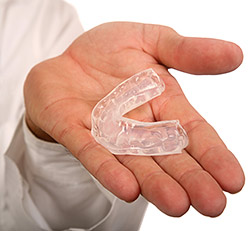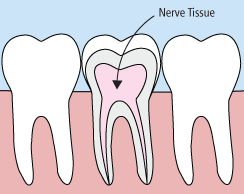Topics on this page

Regular Exams and Cleanings
Regular exams are an important part of maintaining your child's oral health. During your child’s regular exam, we will:
- Check for any problems that may not be seen or felt
- Look for cavities or any other signs of tooth decay
- Inspect the teeth and gums for gingivitis and signs of periodontal disease
- Perform a thorough teeth cleaning
Your child’s exam will take about 45 minutes. Each regular exam includes a detailed teeth cleaning, in which we will clean, polish, and rinse the teeth to remove any tartar and plaque that have built up on the tooth’s surface.
Visiting our office every six months gives you the chance to talk to the doctor about any questions you may have about your child’s oral health. Regular exams are offered by appointment only, so please contact our practice today to schedule your child’s next dental exam and teeth cleaning.
Crowns
Crowns are a restorative procedure used for teeth that are broken, worn, or have portions destroyed by tooth decay. We recommend crowns when cavities are too deep or expansive to be adequately treated with fillings alone.
A crown is a “cap” cemented onto an existing tooth that usually covers the portion of the tooth above the gum line. In effect, the crown becomes the tooth’s new outer surface. Crowns can be made of tooth-colored composite, white zirconia, or stainless steel.
Crowns are needed when there is insufficient tooth strength remaining to hold a filling. Pediatric crowns are pre-fabricated and applied directly into the mouth. The correct crown size is chosen during treatment, so that your child's bite and jaw movements function normally once the crown is placed.
Extractions
 There are times when it is necessary to remove a tooth. Sometimes a baby tooth has misshapen or long roots that prevent it from falling out as it should, and the tooth must be removed to make way for the permanent tooth to erupt. At other times, a tooth may have so much decay that it beyond repairing, so the doctor may recommend its removal. Infection, orthodontic correction, or problems with a wisdom tooth can also require removal of a tooth. When it is determined that a tooth needs to be removed, your child’s dentist may extract the tooth during a regular checkup or may request another visit for this procedure.
There are times when it is necessary to remove a tooth. Sometimes a baby tooth has misshapen or long roots that prevent it from falling out as it should, and the tooth must be removed to make way for the permanent tooth to erupt. At other times, a tooth may have so much decay that it beyond repairing, so the doctor may recommend its removal. Infection, orthodontic correction, or problems with a wisdom tooth can also require removal of a tooth. When it is determined that a tooth needs to be removed, your child’s dentist may extract the tooth during a regular checkup or may request another visit for this procedure.
Fillings
Traditional dental restoratives, or fillings, may include amalgam (silver) or tooth-colored composite. Tooth-colored fillings are typically used on the front teeth where a natural appearance is important. After removing all of the decay from the tooth, fillings are directly placed into a prepared cavity in a single visit.
Fluoride
 Fluoride is effective in preventing cavities and tooth decay and also in preventing plaque from building up and hardening on the tooth’s surface. A fluoride treatment in a dentist’s office takes just a few minutes. After the treatment, your child will be asked not to rinse, eat, or drink for at least 30 minutes to allow the teeth to absorb the fluoride. Depending on your child’s oral health or the doctor’s recommendation, a fluoride treatment may be required every three, six, or 12 months.
Fluoride is effective in preventing cavities and tooth decay and also in preventing plaque from building up and hardening on the tooth’s surface. A fluoride treatment in a dentist’s office takes just a few minutes. After the treatment, your child will be asked not to rinse, eat, or drink for at least 30 minutes to allow the teeth to absorb the fluoride. Depending on your child’s oral health or the doctor’s recommendation, a fluoride treatment may be required every three, six, or 12 months.
Mouthguards
 Whether your child wears braces or not, protecting his or her smile while playing sports is essential. Mouthguards help protect the teeth and gums from injury. If your child participates in any kind of full-contact sport, the American Dental Association recommends that he or she wear a mouthguard. Choosing the right mouthguard is essential. There are three basic types of mouthguards: the pre-made mouthguard, the “boil-and-bite” fitted mouthguard, and a custom-made mouthguard from the dentist. When you choose a mouthguard, be sure to pick one that is tear-resistant, comfortable and well-fitted for your mouth, easy to keep clean, and does not prevent your child from breathing properly. Your dentist can show your child how to wear a mouthguard properly and how to choose the right mouthguard to protect his or her smile.
Whether your child wears braces or not, protecting his or her smile while playing sports is essential. Mouthguards help protect the teeth and gums from injury. If your child participates in any kind of full-contact sport, the American Dental Association recommends that he or she wear a mouthguard. Choosing the right mouthguard is essential. There are three basic types of mouthguards: the pre-made mouthguard, the “boil-and-bite” fitted mouthguard, and a custom-made mouthguard from the dentist. When you choose a mouthguard, be sure to pick one that is tear-resistant, comfortable and well-fitted for your mouth, easy to keep clean, and does not prevent your child from breathing properly. Your dentist can show your child how to wear a mouthguard properly and how to choose the right mouthguard to protect his or her smile.
Grinding
 "My child grinds at night" is a phrase we often hear. For the growing child, tooth grinding during sleep is a common occurrence and not typically a cause for concern. Night-time grinding self-resolves around 7 to 8 years old, when the new permanent molars grow in and establish the bite. However, if your child is grinding beyond this age and showing signs on wear on their early adult teeth, it may be time to consider a nightguard. For younger children, we recommend over-the-counter mouthguards that are trimmed back to better fit your child.
"My child grinds at night" is a phrase we often hear. For the growing child, tooth grinding during sleep is a common occurrence and not typically a cause for concern. Night-time grinding self-resolves around 7 to 8 years old, when the new permanent molars grow in and establish the bite. However, if your child is grinding beyond this age and showing signs on wear on their early adult teeth, it may be time to consider a nightguard. For younger children, we recommend over-the-counter mouthguards that are trimmed back to better fit your child.
If your teenage child often wakes up with jaw pain, earaches, or headaches, or if you see your child clenching or grinding his or her teeth, your child may have a common condition called “bruxism”. Many people do not even know that they grind their teeth, as it often occurs when one is sleeping. If not corrected, bruxism can lead to early wear down, cracked teeth, or even tooth loss.
There is an easy, non-invasive treatment for bruxism: nightguards. Nightguards are an easy way to prevent the wear and damage that teeth-grinding causes over time. A nightguard is inserted over your child’s top or bottom arch and prevents contact with the opposing teeth. Custom-made mouthguards are recommended once your child is done growing dentally or after orthodontic treatment when movement of teeth is no longer anticipated.
Pulpotomy and Pulpectomy aka "Baby Root Canals"
 When a tooth is cracked or has a deep cavity, bacteria can enter the pulp and nerve tissue and cause pain, infection, and abscess. It is best to prevent this scenario by treating the affected nerve with either a pulpotomy or pulpectomy, also known as a "baby root canal." If the affected nerve tissue is not treat, infection, pain and swelling can result. This can not only injure your child’s jawbones and render the tooth unsalvageable, but it is also detrimental to his or her overall health.
When a tooth is cracked or has a deep cavity, bacteria can enter the pulp and nerve tissue and cause pain, infection, and abscess. It is best to prevent this scenario by treating the affected nerve with either a pulpotomy or pulpectomy, also known as a "baby root canal." If the affected nerve tissue is not treat, infection, pain and swelling can result. This can not only injure your child’s jawbones and render the tooth unsalvageable, but it is also detrimental to his or her overall health.
During treatment, the dentist will remove the affected tissue. Next, the interior of the tooth will be cleaned and sealed. Finally, the tooth is covered by a crown to strengthen and protect the tooth from breaking. As long as your child continues to care for his or her teeth and gums with regular brushing, flossing, and checkups, the restored tooth may last a lifetime.
Sealants
 Sometimes brushing is not enough, especially when it comes to those hard-to-reach spots in your child’s mouth. It is difficult for a toothbrush to get in the small cracks and grooves on your child’s teeth. If left alone, those tiny areas can develop tooth decay. Sealants give your child’s teeth extra protection against decay and help prevent cavities.
Sometimes brushing is not enough, especially when it comes to those hard-to-reach spots in your child’s mouth. It is difficult for a toothbrush to get in the small cracks and grooves on your child’s teeth. If left alone, those tiny areas can develop tooth decay. Sealants give your child’s teeth extra protection against decay and help prevent cavities.
Dental sealants are a plastic material that bonds and hardens in the deep grooves on your child’s tooth’s surface. When a tooth is sealed, the tiny grooves become smooth and are less likely to harbor plaque.
Sealants are typically applied to children’s teeth as a preventive measure against tooth decay after the permanent teeth have erupted. It is more common to seal “permanent” teeth rather than “baby” teeth and sealants usually last from three to five years.

 Website Powered by Sesame 24-7™
Website Powered by Sesame 24-7™